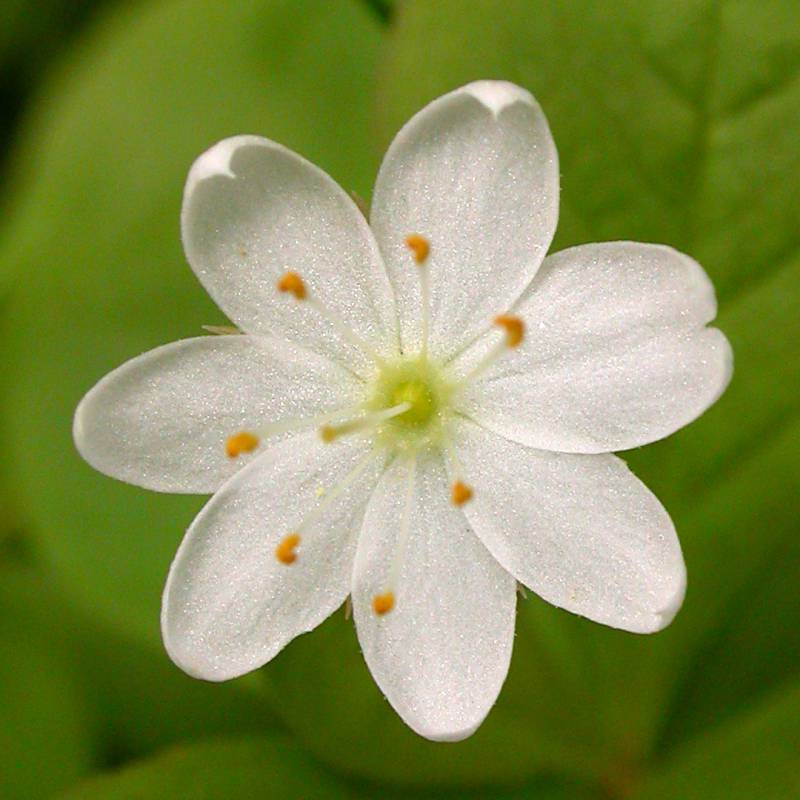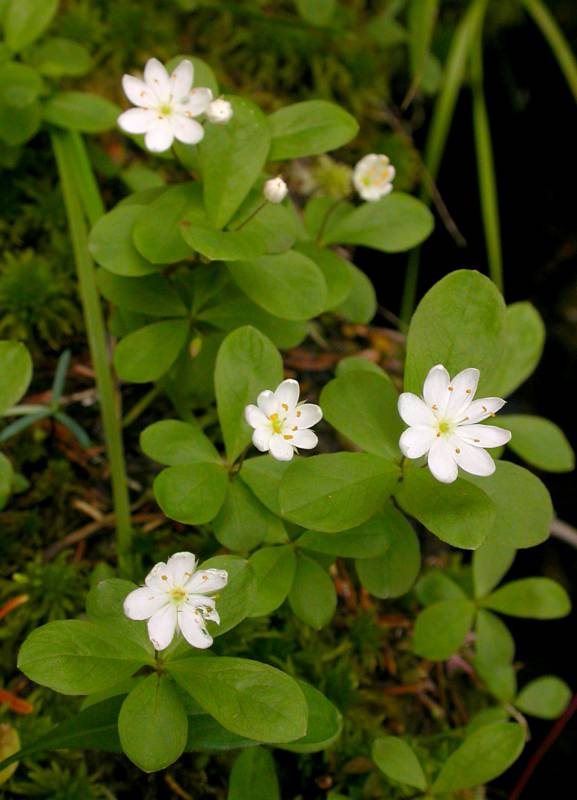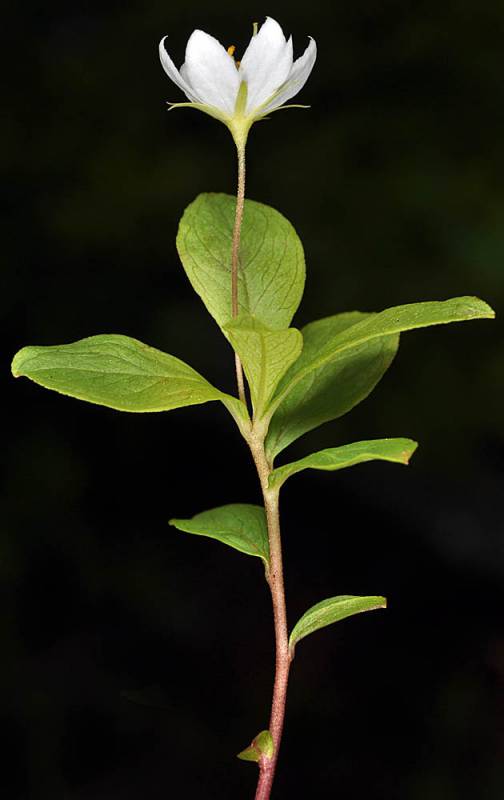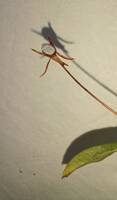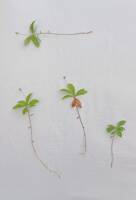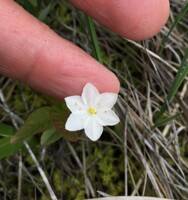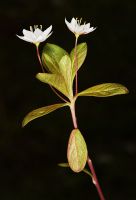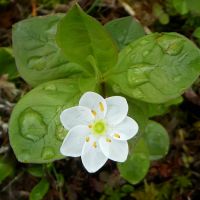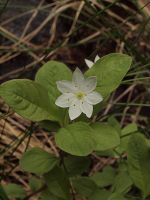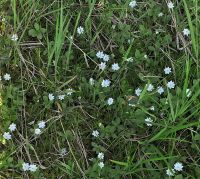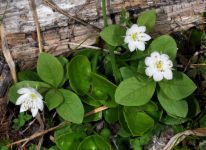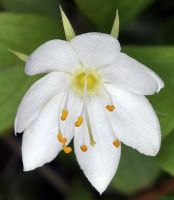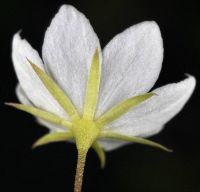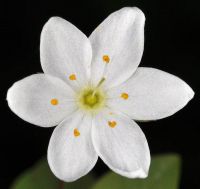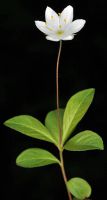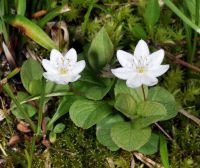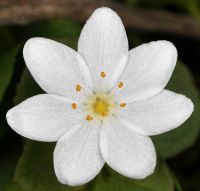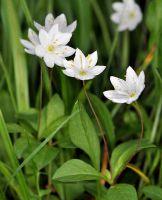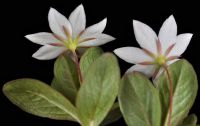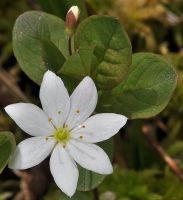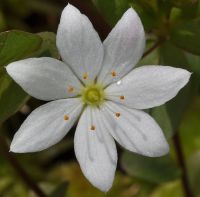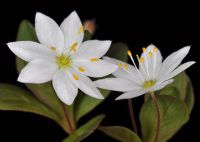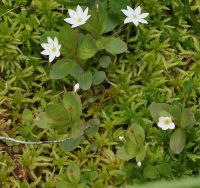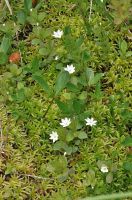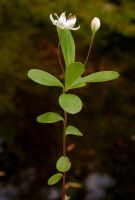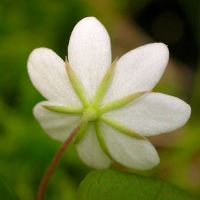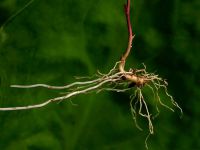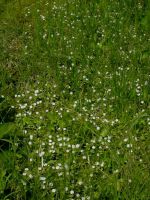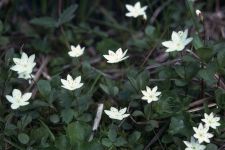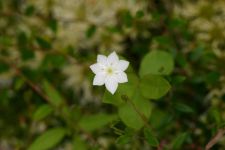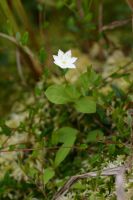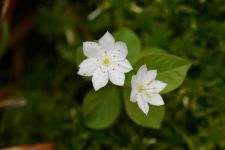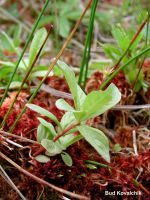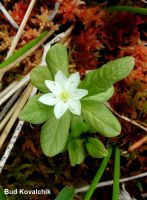Distribution: Occurring chiefly west of the Cascades crest in Washington; Alaska to California, east to Northwest Territories, Sasketchewan, and Idaho; also in Eurasia.
Habitat: Bogs and swamps, low to mid-elevations in the mountains.
Flowers: May-August
Origin: Native
Growth Duration: Perennial
Conservation Status: Not of concern
Pollination: Bees, flies
Perennial herbs from slender rootstocks and tubers, the tubers short and horizontal; flowering stems 5-20 cm. tall.
Main leaves 3-8 in a terminal whorl, elliptic to obovate, 1.5-5 cm. long, petiolate; cauline leaves few, smaller and reduced downward, sessile.
Flowers axillary from 1 or more leaf axils, on long, slender, curved pedicels; calyx parted to near the base, the 6 or 7 lobes linear-lanceolate; corolla usually white, 12-16 mm. broad, rotate, the lobes divided nearly to the base and the same number as the calyx, lance-ovate; stamens opposite the corolla lobes, exerted, the filaments glabrous, slender, considerably longer than the anthers.
Capsule opening by valves.
Trientalis europaea has a few stem leaves; Trientalis borealis has none.
Publication: Willdenowia 39(1): 51. 2009.
Trientalis europaea L. [FNA8]
Trientalis europaea L. ssp. arctica (Fisch. ex Hook.) Hultén [ILBC]
Trientalis europaea L. var. aleutica Tatewaki & Kobayashi
Trientalis europaea L. var. arctica (Fisch. ex Hook.) Ledeb.
PNW Herbaria: Specimen records of Lysimachia europaea in the Consortium of Pacific Northwest Herbaria database
WA Flora Checklist: Lysimachia europaea checklist entry
OregonFlora: Lysimachia europaea information
E-Flora BC: Lysimachia europaea atlas page
CalPhotos: Lysimachia europaea photos

